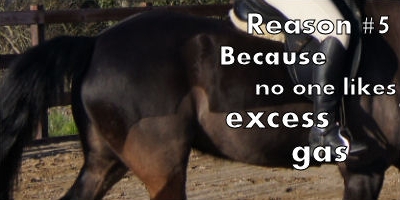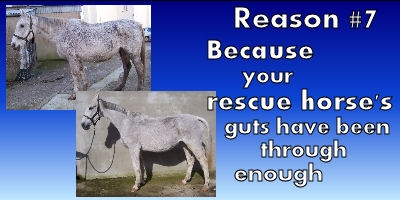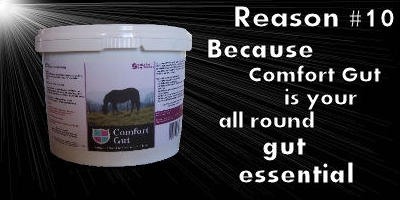Reason 1 - Because no one likes a dirty bum and tail
Lush grass, high grain levels, wormers, stress, rich haylage, changing diet, changing routine, changing environment, fast paced life, travelling, competing, your horse has a lot to cope with! All these things stress the digestive system and can cause food to move too quickly through the stomach and intestines.
Reason 2 - Because you want all the sparkle, without the fizz
The show season is upon us, the excitement is rising! In the short term we can cope with stress but week-in week-out horses can begin to struggle. Not only do they have to contend with the exertion at a show but also the time travelling, with over-exertion and stress to stay balanced while moving.
Reason 3 - Because Poor Weight Gain has no place in your summer schedule
Everyone loves to see a horse in great shape and in great form, all summer long, all year round.
Reason 4 - Because a dull coat is so last season
Toxins and impurities and part of everyday day life, they cannot be avoided; they are present in the air and soil. In small amounts they do very little harm but if there is a build up this can show in your horses coat making it look dull, patchy, coarse and lifeless. Comfort Gut actively absorbs toxins, dirt and impurities and they are harmlessly removed and expelled in your horses dung.
Reason 5 - Because no one likes excess gas
Gargling, bloated stomachs and trapped wind are extremely uncomfortable and can have many causes but here are a few main offenders; lush grass, high grain ratios and haylage.
Reason 6 - Because your foals stomach needs a comfort blanket
Starting life is tough, getting used to new foods and mummy going though hormonal changes can be hard on a foals immature digestive system
Reason 7 - Because your rescue horses guts have been through enough
You dont know what a starving horse has to eat in order to survive. Buttercups, are poisonous, but are they better than nothing when you have nothing else to choose from?
Reason 8 - Because concentrates don't have to mean gut discomfort
Racehorses and performance horse life highly elating, exciting lives! This too causes problems; high exercise levels with high grain intake, long periods without food, excitement and stress can all contribute to acid in the stomach.
Reason 9 - Because a stabled horse can be happy and content
Vices are an unnecessary evil in equestrian circles! Where do vices originate? Genetic?? Environments?? Coping mechanism?? The restless, fidgety, unsettled, uneasy, irritable, anxious, apprehensive, edgy horse may feel the need to develop a vice.
Reason 10 - Because Comfort Gut is your all round gut essential
Comfort Gut aids the internal workings of a horse from the first mouthful to the last drop of poo! So stop your feed room looking like a pharmacy. Think Comfort Gut .










 0 items
0 items 


 Copyright 2023 @ comfortgutaustralia.com -
Copyright 2023 @ comfortgutaustralia.com -  Find us on Facebook
Find us on Facebook Follow us on Twitter
Follow us on Twitter 
